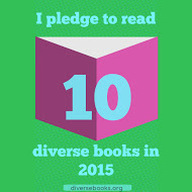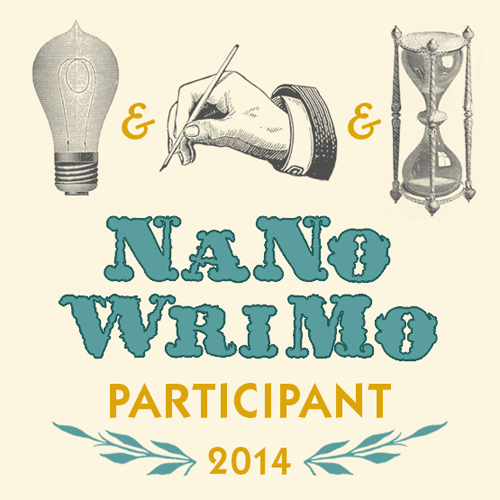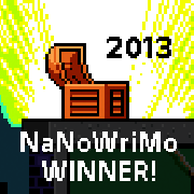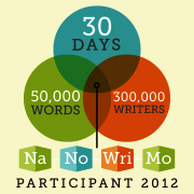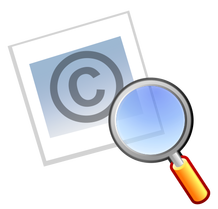
I recently had an epiphany about the issue of copyright as it applies to media literacy and teaching. Until recently, I was an educator that was blissfully ignorant about copyright issues when assigning student projects and in my own media use for the classroom. If I needed an image for a handout or classroom web page, I Googled what I wanted and inserted it. If my students did a poster project, I made no stipulations about what kind of images could be used or that they keep track of their sources. In contrast, with writing assignments I pounded in my warning about plagiarism and the need to cite sources. But for other media, it wasn't that I turned a blind eye. I just didn't think about it.
About two years ago, I took a graduate course where the professor brought up the issue of copyright and digital citizenship. We had an assignment to create a digital story to teach a concept to be used in our curriculum and I decided to create a book trailer. As we learned about the requirements of the project, we had a discussion of copyright. I realized, as did several other educators in my cohort, that in our personal and professional uses of technology we weren't always modeling the digital citizenship qualities we wanted our students to learn. This is where I first learned about Creative Commons licensing, how to find free images and music that were copyright-free or friendly and began a new campaign in my classroom to teach copyright awareness to my students.
About two years ago, I took a graduate course where the professor brought up the issue of copyright and digital citizenship. We had an assignment to create a digital story to teach a concept to be used in our curriculum and I decided to create a book trailer. As we learned about the requirements of the project, we had a discussion of copyright. I realized, as did several other educators in my cohort, that in our personal and professional uses of technology we weren't always modeling the digital citizenship qualities we wanted our students to learn. This is where I first learned about Creative Commons licensing, how to find free images and music that were copyright-free or friendly and began a new campaign in my classroom to teach copyright awareness to my students.
I had discussions with my 5th and 6th graders and learned that, like me, other teachers at my school weren't talking about copyright with students. In my desire to rectify this and create "good little digital citizens," I required that students creating book trailers for an extra-credit project, could only use Creative Commons licensed resources. I had been to a summer workshop that introduced several excellent free tools that I encouraged my students to use, like FreePlayMusic.com and Wikimedia Commons. The kids were excited by the project, but some lost steam when confronted with the challenge of creating the vision they wanted with only copyright-free images. Some dropped the project, but I told myself they must not have been that dedicated and I was doing the right thing. The pendulum of my understanding of copyright use for student multimedia projects had moved entirely the other way. I went from being oblivious to copyright issues to being the copyright police. Some great projects were created, but I feel like some other potentially great projects were abandoned due to students being frustrated with the limitations.
Fortunately, the pendulum has begun to swing the other way for me based on a better understanding of copyright law and the doctrine of fair use. I had heard about fair use, but didn't understand it until I recently read Copyright Clarity: How Fair Use Supports Digital Learning by Renee Hobbs. Hobbs argues that educators need to gain their own understanding of what the law is and how it applies to their specific use situations. The most powerful provision in copyright law for users is the doctrine of fair use. Hobbs defines fair use as:
|
In an effort to make copyright and fair use seem simpler to educators, you'll often find checklists and rubrics online and in curriculum materials. We need to be careful as educators in relying on these as many of these documents are simply guidelines and add restrictions that are not stated in the actual law. In an effort to "play it safe," many of the guidelines (some negotiated with the media industry) propose narrower use recommendations and make statements that can be confusing or misleading.
The best way to know whether a use of copyrighted material is okay is to know and understand the law for yourself. The doctrine of fair use states:
The best way to know whether a use of copyrighted material is okay is to know and understand the law for yourself. The doctrine of fair use states:
The fair use of a copyrighted work is not an infringement of copyright. This includes reproduction in copies for purposes such as criticism, comment, news reporting, teaching (including multiple copies for classroom use), scholarship, or research. In determining whether the use made of a work in any particular case is a fair use, the factors to be considered shall include:
|
In order to apply the fair use doctrine, a user must be clear on why they want to use a copyrighted work, how they plan to use it, how much of it will be used, and how the use will impact the original work. If the user can validly answer these questions, the use most likely will fall under the fair use doctrine. Even in the unlikely occurrence that copyright holders challenge the use of their work, the "reasonableness standard" in the copyright law considers whether a reasonable effort was made in the determination of fair-use and offers some protection for those working in nonprofit and educational fields.
The doctrine of fair uses changes the concept of copyright from being about the authors to being about the users. There are no hard and fast rules because the law is meant to be flexible and contextual. Every situation is different and it is up to individual users to decide if their desired use meets the standard. Hobbs states,"The key that unlocks the doctrine of fair use is the idea of transformativeness." Simply put, does the intended use make the final product substantially different in purpose and audience or add value to the original work? The whole process of making these determinations can be empowering for students and teach vital lessons in critical thinking.
My students are in the process of making book trailers again this year and instead of limiting their creative freedom in choosing media, I introduced the concept of copyright and fair use. As they begin to select images, they must make a conscious decision for each piece of copyrighted work they wish to include. Why do they want to include this image? Could another image be easily substituted? How will their use be different than the original use of the image? These questions must be answered to themselves, to their classmates, and to me. When deciding about the use of copyrighted music, it is trickier. If a copyrighted song is simply going to be used as background music, that may not be transformative and original in itself. Students will have to be creative in those aspects and come up with new ways to repurpose the media they wish to use.
The doctrine of fair uses changes the concept of copyright from being about the authors to being about the users. There are no hard and fast rules because the law is meant to be flexible and contextual. Every situation is different and it is up to individual users to decide if their desired use meets the standard. Hobbs states,"The key that unlocks the doctrine of fair use is the idea of transformativeness." Simply put, does the intended use make the final product substantially different in purpose and audience or add value to the original work? The whole process of making these determinations can be empowering for students and teach vital lessons in critical thinking.
My students are in the process of making book trailers again this year and instead of limiting their creative freedom in choosing media, I introduced the concept of copyright and fair use. As they begin to select images, they must make a conscious decision for each piece of copyrighted work they wish to include. Why do they want to include this image? Could another image be easily substituted? How will their use be different than the original use of the image? These questions must be answered to themselves, to their classmates, and to me. When deciding about the use of copyrighted music, it is trickier. If a copyrighted song is simply going to be used as background music, that may not be transformative and original in itself. Students will have to be creative in those aspects and come up with new ways to repurpose the media they wish to use.
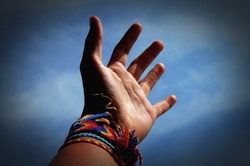
So where am I now in regards to my understanding of copyright and fair use in the classroom? I’m in a better place with more freedom and choices. The pendulum has swung towards the center where I can try to help my students find the balance between respecting the rights of media creators, but also apply the legal rights we have as users to transform and share our work with others.
Some resources for teaching about copyright and fair use are below:
Websites
Code of Best Practices in Fair Use for Media Literacy Education
Creative Commons for Kids
Copyright Kids
Document the Fair Use Reasoning Process
Videos
YouTube Copyright School
Copyright Education Users' Rights, Section 107 Music Video
Books
Copyright Clarity: How Fair Use Supports Digital Learning
Reclaiming Fair Use: How to Put Balance Back in Copyright
Websites
Code of Best Practices in Fair Use for Media Literacy Education
Creative Commons for Kids
Copyright Kids
Document the Fair Use Reasoning Process
Videos
YouTube Copyright School
Copyright Education Users' Rights, Section 107 Music Video
Books
Copyright Clarity: How Fair Use Supports Digital Learning
Reclaiming Fair Use: How to Put Balance Back in Copyright


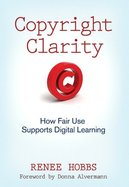
 RSS Feed
RSS Feed




